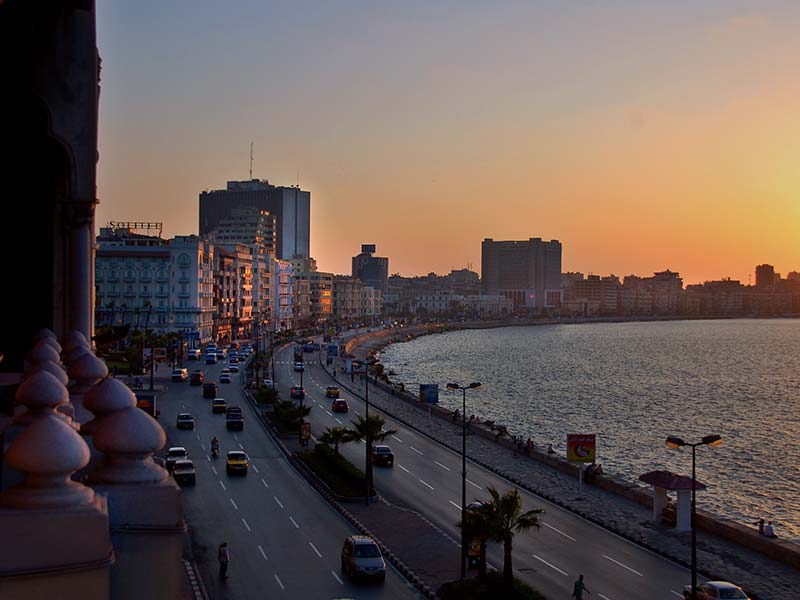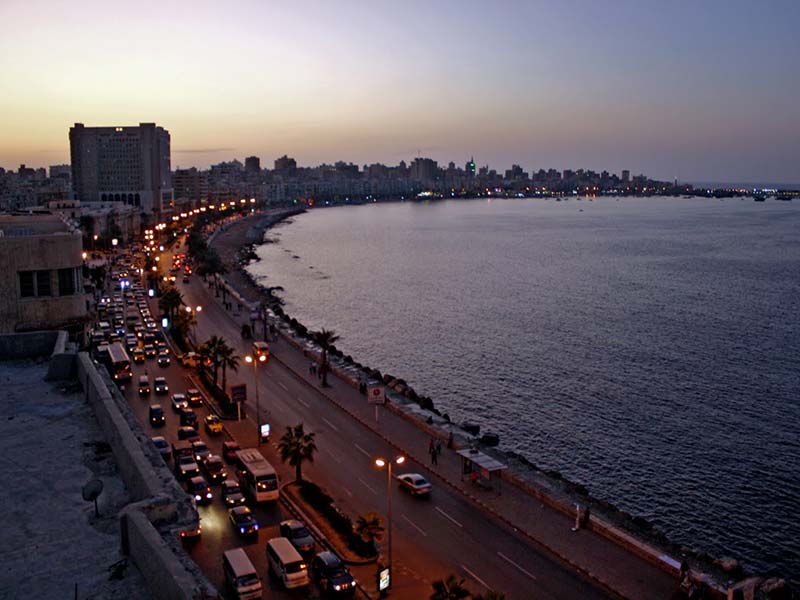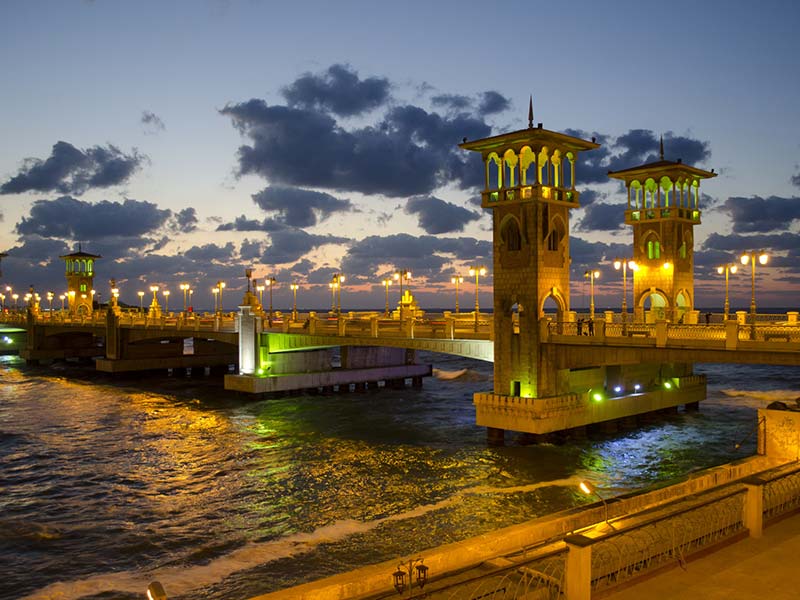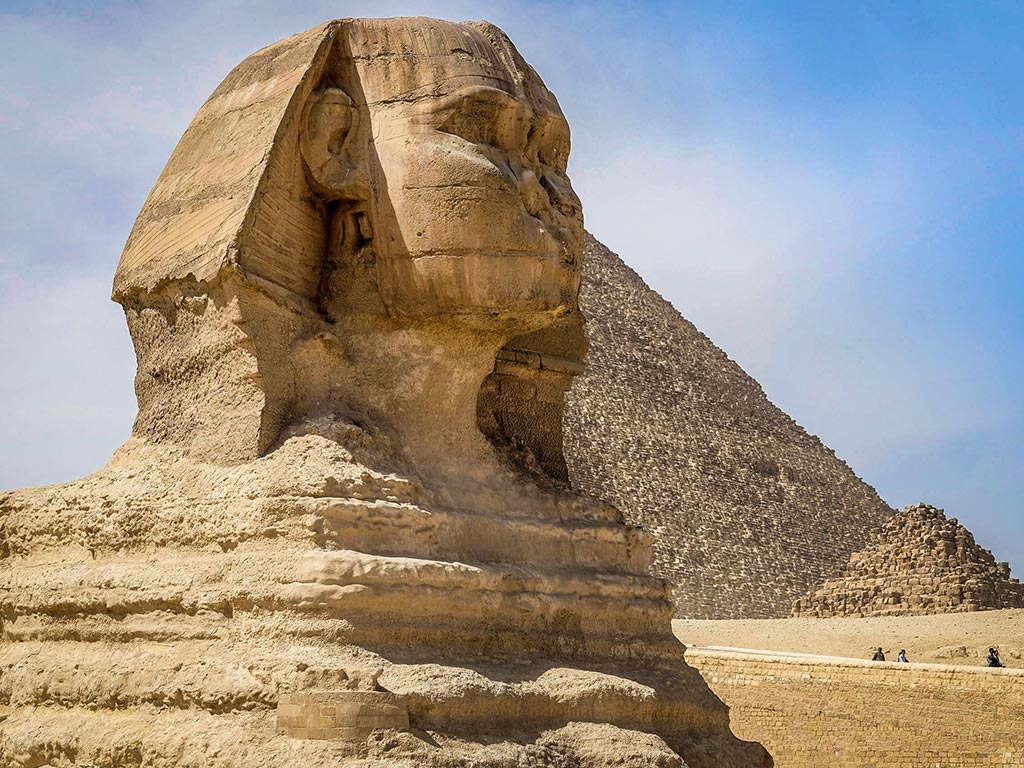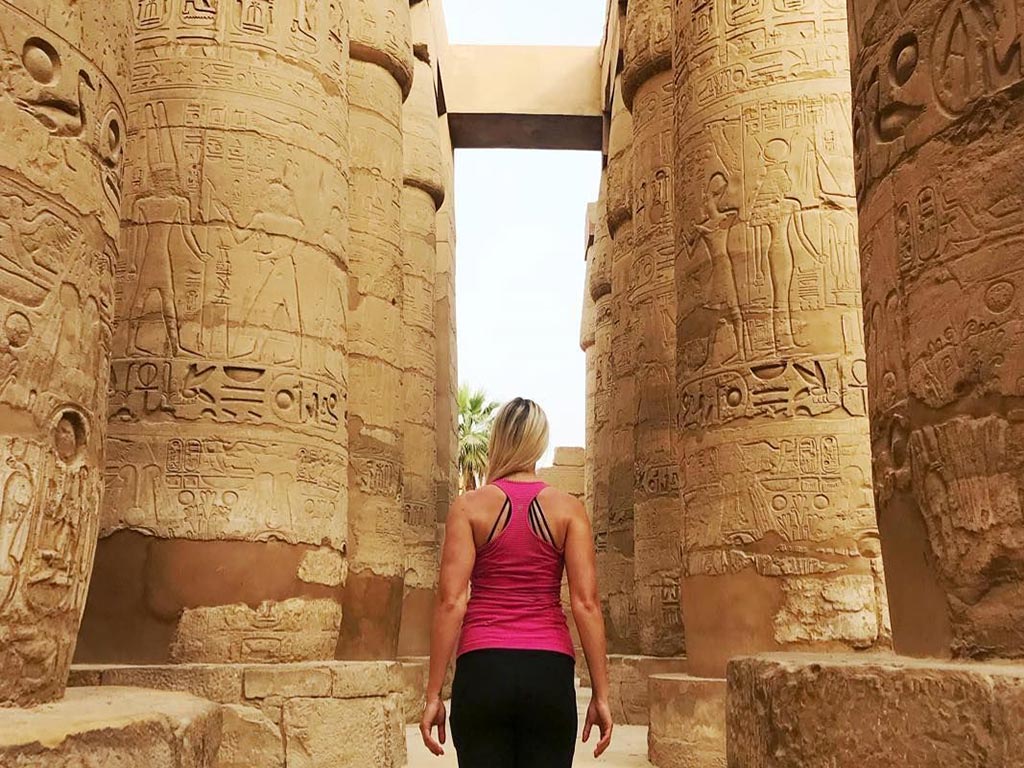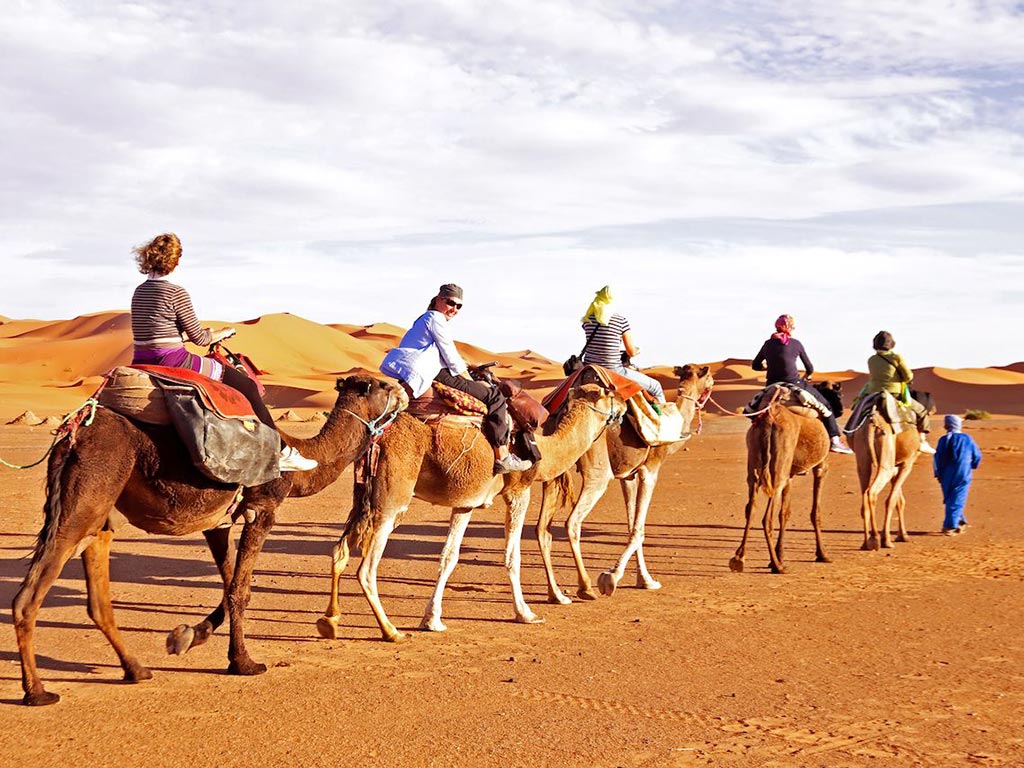Alexandria is the second largest city and the second largest metropolitan area in Egypt also known as “The Pearl of the Mediterranean” with number of population of 4.1 million, extending about 32 km (20 mi) along the coast of the Mediterranean Sea. Founded by Alexander the Great in 331 BC, Alexandria became the capital of Graeco-Roman Egypt. For long time it has status as beacon of the culture at it was symbolized be Pharos – legendary lighthouse that is counted as one of the Seven Wonders of the Word.
Nowadays Alexandria is largest seaport, serving approximately 80% of Egypt’s import and export; also it is an important industrial center because of its natural gas and oil pipelines from Suez.
Because of the rich history of ancient time it is one of the meanest and important tourist resorts. Here you can find historical monuments of the past, history museums with vast collection of exhibit items of Prehistoric and Pharonic times, as well you can see contemporary hi technology library “Bibliotheca Alexandrina” so famous all around the world.
Citadel of Qaitbay. Marine museum
Built in 1477 AD by Mameluke Sultan Abdul-Nasser Qait Bay. This citadel was built in 1480 by Sultan Qaitbay on the site of the Pharos Lighthouse, to protect the city from the crusaders who used to attack the city by sea. Today, it is transformed into a marine museum that displays different kinds of sea creatures and scenes from the Red and Mediterranean Seas. The Marine Museum is an entertaining experience for the whole family. If you ever have the chance to visit the great Fortress of Qaytbey, dont miss a look at the displays in the Marine Museum, located at the old gate of the fort.
Kom el-Shouqafa, Karmouz
The underground tunnels of the catacombs lie in the densely populated district of Karmouz to the east of Alexandria. The catacombs were most probably used as a private tomb, for a single wealthy family, and later converted to a public cemetery. Three underground levels for the funerary ritual and entombment. The catacombs are unique both for their plan and for their decoration, which represents an integration of the cultures and traditions of the Egyptians, Greeks and Romans.
Pompey’s Pillar, Karmouz
An ancient monument of 25-meter high. Roman column of red Aswan granite was constructed in honor of the Emperor Diocletian in 297 AD. The Arabs called it “Amoud el-Sawari”, Column of the Horsemen. The Pillar is the tallest ancient monument in Alexandria. The area where the column stands also has other ruins and three sphinxes, sculptures such as the Serapium oracle.
Roman Theatre, Kom El-Dikka
Well-preserved remains of Roman theatre with galleries, sections of mosaic-flooring, and marble seats for up to 800 spectators. This area was the Park of Pan and a pleasure garden in Ptolemaic times. The theatre was constructed with thirteen semi-circular tiers made of white marble, columns are made of green marble imported from Asia Minor, and red granite imported from Aswan. The wings of the stage are decorated with geometric mosaic paving. Also in the area of the theatre you can see the substantial arches and walls in stone, the brick of the Roman baths, and the remains of Roman houses.
Montazah Palace, El Montazah
Was Build in 1892 by Abbas II the last khedive of Egypt along the Alexandrian coastline as a summer residence. The palace is surrounded by garden about which you can say that it is one of the most amazing places in Alexandria. If you came to Alexandria and didn’t visit Montazah Palace and Garden then you missed Alexandria spirit.
Bibliotheca Alexandrina, Shatb
A huge modern library and research center constructed near the site of the former Library of Alexandria . Construction work began in 1995 and, after some USD $220 million had been spent, the complex was officially inaugurated on October 16, 2002. At the bottom line it is much more than a library. It contains: three Museums, a planetarium, seven academic research centers, nine permanent exhibitions… This vast complex is receiving more than 800,000 visitors a year.
The Corniche
A 15km walkway (wharf/pier/boardwalk) along the harbor. Here you can find restaurants, markets and historic sights. Till the 20th century on this area was situated five mile long wall with towers that was protecting the city since the 13th Century. In 1900s a strip of land with a history of about 100 years was reclaimed by the sea, and the area became popular with beach goers.


